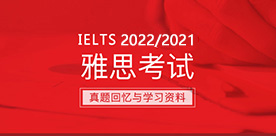雅思剑5Test2阅读译文Passage1-BAKELITE The birth of modern plastics
2017/5/14 16:46:58来源:新航道作者:新航道
摘要: 很多雅思考生为了提高雅思阅读分数,做了很多题目,但成效不大,这时可以想想是不是备考书籍选择不当造成,建议考生们多多看剑桥雅思真题。上海新航道雅思小编第一时间给大家带来了雅思剑5Test2阅读译文Passage1-BAKELITE The birth of modern plastics。希望可以帮助广大雅思考生轻松备考雅思。
很多雅思考生为了提高雅思阅读分数,做了很多题目,但成效不大,这时可以想想是不是备考书籍选择不当造成,建议考生们多多看剑桥雅思真题。上海新航道雅思小编第一时间给大家带来了雅思剑5Test2阅读译文Passage1-BAKELITE The birth of modern plastics。希望可以帮助广大雅思考生轻松备考雅思。
雅思剑5Test2阅读译文Passage1-BAKELITE The birth of modern plastics
酚醛塑料——现代塑料的诞生
In 1907, Leo Hendrick Baekeland, a Belgian scientist working in New York, discovered and patented a revolutionary new synthetic material. His invention, which he named ‘Bakelite,’ was of enormous technological importance, and effectively launched the modern plastics industry.
1907年,比利时科学家Leo Hendrick Baekeland在纽约工作时发现了一种全新的合成材料,并申请了专利。他将自己的发明称作“酚醛塑料”,他的这一发明在技术上起到了极其重要的作用,并有效地催生了现代塑料业。
The term ‘plastic’ comes from the Greek plassein, meaning ‘to mould’. Some plastics are derived from natural sources, some are semi-synthetic (the result of chemical action on a natural substance), and some are entirely synthetic, that is, chemically engineered from the constituents of coal or oil. Some are ‘thermoplastic’, which means that, like candlewax, they melt when heated and can then be reshaped. Others are ‘thermosetting’: like eggs, they cannot revert to their original viscous state, and their shape is thus fixed for ever. Bakelite had the distinction of being the first totally synthetic thermosetting plastic.
“塑料(plastic) ”这一术语原于希腊词plassein,意思就是“塑造”。某些塑料源自天然材料,某些塑料是半人工合成塑料,即由天然材料发生化学反应形成的。还有的塑料是完全由人工合成的,也就是通过煤或布油的成分发生化学反应形成的。有些塑料是热塑性塑料,即像赠烛一样,受热后形状可以重塑。有些塑枳隄热固性塑料,就像鸡蛋一样,受热后无法再回到原来的黏滞状态,是永久定型的。酚醛塑料是第一种完全由人工合成的热固性塑料。
The history of today’s plastics begins with the discovery of a series of semi-synthetic thermoplastic materials in the mid-nineteenth century. The impetus behind the development of these early plastics was generated by a number of factors — immense technological progress in the domain of chemistry, coupled with wider cultural changes, and the pragmatic need to find acceptable substitutes for dwindling supplies of ‘luxury’ materials such as tortoiseshell and ivory.
当代塑料的历史源于19世纪中期对一系列半人工合成的热塑材料的发现。早期研制这些塑料材料有多个动因:化学领域的巨大的技术进步,文化观念的巨大转变,以及等找合适的材料代替供应量日益减少的奢侈原料(如玳瑁壳和象牙)的实际需要。
Baekeland’s interest in plastics began in 1885 when, as a young chemistry student in Belgium, he embarked on research into phenolic resins, the group of sticky substances produced when phenol (carbolic acid) combines with an aldehyde (a volatile fluid similar to alcohol). He soon abandoned the subject, however, only returning to it some years later. By 1905 he was a wealthy New Yorker, having recently made his fortune with the invention of a new photographic paper. While Baekeland had been busily amassing dollars, some advances had been made in the development of plastics. The years 1899 and 1900 had seen the patenting of the first semi-synthetic thermosetting material that could be manufactured on an industrial scale. In purely scientific terms, Baekeland’s major contribution to the field is not so much the actual discovery of the material to which he gave his name, but rather the method by which a reaction between phenol and formaldehyde could be controlled, thus making possible its preparation on a commercial basis. On 13 July 1907, Baekeland took out his famous patent describing this preparation, the essential features of which are still in use today.
Baekeland对塑料的兴趣始于1885年,当时他还是比利时的一个年轻的化学专业学生。 Baekeland开始研究的是酚醛树脂。酚醛树脂是苯酚(石炭酸)和一种醛(与酒精类似的挥发性液体)结合的粘稠状的产物。不过,他很快就放弃了这一课题,直到多年以后才重新开始这一研究。到了1905年,由于当时刚发明了一种新型照相纸,他赚了些钱,成为了纽约市的一位富人。当Baekeland忙着赚钱的时候,塑料研究方面取得了几项重大进展。1899年至1900 年间,第一种可以投入大规模工业生产的半人工合成热塑材料获得了专利。从纯科学的角度讲,Baelcelmid对塑料这一领域的贡献并不在于他发现了酚醛塑料这种以他名字命名的材料,而是在于控制苯酚和甲醛反应的方法,正是这种控制方法使酚醛塑料可以进行大规模的商业制备。1907年7月13日,Baekeland获得了描述这一制备过程的专利,其中主要步骤至今仍在使用。
The original patent outlined a three-stage process, in which phenol and formaldehyde (from wood or coal) were initially combined under vacuum inside a large egg-shaped kettle. The result was a resin known as Novalak which became soluble and malleable when heated. The resin was allowed to cool in shallow trays until it hardened, and then broken up and ground into powder. Other substances were then introduced: including fillers, such as woodflour, asbestos or cotton, which increase strength and moisture resistance, catalysts (substances to speed up the reaction between two chemicals without joining to either) and hexa, a compound of ammonia and formaldehyde which supplied the additional formaldehyde necessary to form a thermosetting resin. This resin was then left to cool and harden, and ground up a second time. The resulting granular powder was raw Bakelite, ready to be made into a vast range of manufactured objects. In the last stage, the heated Bakelite was poured into a hollow mould of the required shape and subjected to extreme heat and pressure, thereby ‘setting’ its form for life.
Baekeland的这个专利列举了三个步骤:首先,苯酿和甲醛(从木材或煤中提取)在真空的卵形瓶中进行反应,生成一种叫Novalak的树脂,这种树脂可溶且受热后有延展性。然后使这种树脂在浅盘中冷却、变硬,最后破碎,碾成粉末。接着加入其他的物质,包括填料,如木屑、石棉或棉花,以增加强度和防潮,还要加入催化剂(加速两种化学物质的反应但自身在反应后却不发生变化的物质)和六元化合物(一种有氨和甲醛的化合物,为生成热塑性树脂提供必要的甲醛)。然后将得到的树脂再次冷却,使其变硬,重新碾成粉末。由此形成的颗粒状粉末就是粗质酚醛塑料,可以用来制造一系列的其他物品。在最后一步,将受热的酚醛塑料浇进所需形状的中空模具中,施以高温髙压,使其永久定型。
The design of Bakelite objects, everything from earrings to television sets, was governed to a large extent by the technical requirements of the molding process. The object could not be designed so that it was locked into the mould and therefore difficult to extract. A common general rule was that objects should taper towards the deepest part of the mould, and if necessary the product was molded in separate pieces. Moulds had to be carefully designed so that the molten Bakelite would flow evenly and completely into the mould. Sharp corners proved impractical and were thus avoided, giving rise to the smooth, ‘streamlined’ style popular in the 1930s. The thickness of the walls of the mould was also crucial: thick walls took longer to cool and harden, a factor which had to be considered by the designer in order to make the most efficient use of machines.
酚醛塑料制成品形状的设计,无论是耳环还是电视机外壳,都在很大程度上取决于塑形过程中的技术要求。设计要避免物品在塑形过程中卡在模具中取不出来。一个常用的规则就是物品越深人模具的部分应越细。若有必要,则将物品分成几部分,单独塑形。模具的设计要十分小心,使熔化的酚醛塑料能平均地全部流人模具中。尖角不实用,因此要尽量避免,由此也带来了20世纪30年代光滑的流线型形状的风行。模具壁的厚度也很关键。模具壁越厚,冷却硬化需要的时间就越长。为了使(生产)机器能得到高效的使用,模具厚度这个因素是设计者必须加以考虑的。
Baekeland’s invention, although treated with disdain in its early years, went on to enjoy an unparalleled popularity which lasted throughout the first half of the twentieth century. It became the wonder product of the new world of industrials expansion — ‘the material of a thousand uses’. Being both non-porous and heat-resistant, Bakelite kitchen goods were promoted as being germ-free and sterilisable. Electrical manufacturers seized on its insulating properties, and consumers everywhere relished its dazzling array of shades, delighted that they were now, at last, no longer restricted to the wood tones and drab browns of the preplastic era. It then fell from favour again during the 1950s, and was despised and destroyed in vast quantities. Recently, however, it has been experiencing something of a renaissance, with renewed demand for original Bakelite objects in the collectors’ marketplace, and museums, societies and dedicated individuals once again appreciating the style and originality of this innovative material.
尽管起初Baekeland的这一发明受到人们的鄙视,但后来却受到前所未有的欢迎,在20世纪前半叶一直都很流行。这一发明成了工业扩张时期的宠儿,被称为是“万能材料”。由于能防渗抗热,用酚醛塑料制成的厨房用品都在宣传中强调其无菌,可消毒的特点。电器制造商利用其绝缘的特性,消费者则享受到其鲜艳夺目的色彩,庆幸自己不用再忍受“前塑料时代”只有木色和棕色的单调了。到了20世纪50年代,酚醛塑料又再度失去人们的宠爱,遭到人们的鄙视,被大量销毁。而最近,酚醛塑料又好像重焕了生机,收藏品市场上对原来用酚醛塑料制成的物品需求又有所增加。博物馆、各种社团和热衷于此的个人收藏者又开始重新欣赏起这种创新型材料的风格和其新颖别致的特点。
以上就是小编为大家带来关于《剑桥雅思5真题》阅读部分供大家阅读参考,新航道雅思资料频道将第一时间为考生发布最全、最新、最专业的雅思资讯及雅思考试资料及机经.
免费获取资料
热报课程
- 雅思课程
| 班级名称 | 班号 | 开课时间 | 人数 | 学费 | 报名 |
|---|
免责声明
1、如转载本网原创文章,情表明出处
2、本网转载媒体稿件旨在传播更多有益信息,并不代表同意该观点,本网不承担稿件侵权行为的连带责任;
3、如本网转载稿、资料分享涉及版权等问题,请作者见稿后速与新航道联系(电话:021-64380066),我们会第一时间删除。
全真模拟测试
制作:每每









